1918-1919 France
Basic Training
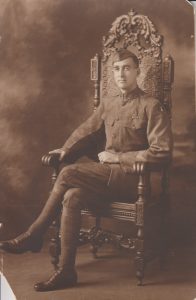

Although he was still a British citizen, the Draft Board in Albuquerque sent Horace a notice that he received on January 4th of 1918 to serve in the U. S. Army. In arranging for his family’s needs, Horace moved his mother and Hilda to an apartment in the Bronx (NY City) near family members of the Wilford Doig family who had emigrated from Antigua. He trained his replacement for the Indian Stores and said “Goodbye” to co-workers, vendors and friends in a dozen Fred Harvey locations.
Packing up his belongings Horace left Albuquerque in April and reported for basic training at Camp Funston, Kansas. He was placed in Company D of the 356th Infantry that had been formed earlier in September 1917. Their eight months of intensive training was designed to bring about a great transformation. The routine of civilian life had to give way to that of the military. The men became hardened, adapted themselves to their new environment and learned the rudiments of military life. Athletics were a prominent feature and drill teams were organized. The best team put on exhibitions in several Missouri towns. Horace celebrated his 30th birthday on April 28th, 1918. Doubtless he had been recognized for his maturity and leadership and was promoted to the rank of Corporal. Leaving Kansas on May 23rd, the Division crossed the Atlantic and finally arrived a month later in France.
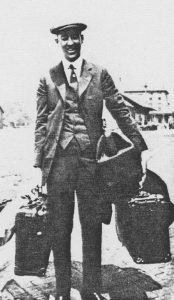
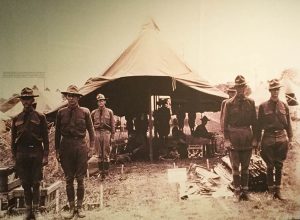

The89th Division on the Western Front
Arriving in the Reynel training area on June 23rd, his company would finally see action on the Western Front during a massive Allies offensive across northeast France during the final five months of the war.

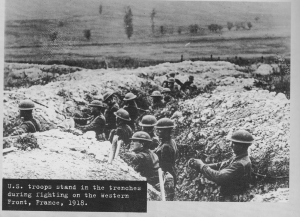

1918-1919
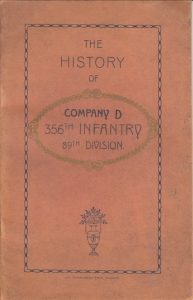
89th Division – Fighting Events in France during 1918
- Jun 23 – Aug 10 For two months the 89th Division trained near Reynel, France. Gen.Pershing was determined to change from the Allie’s stationery trench warfare to a moving offensive across the countryside. His new recruits from America needed specialized training before facing the seasoned German infantry.
- Aug 10 – Sep 12 Horace’s Company joined the 1st American Army in the Sector North-West of Toul.
- Sep 12 – Sep 13 In the St. Mihiel Offensive, Company D captured the strong position of Bois de Mort Mare, advancing 18 kilometers and capturing 200 prisoners.
- Sep 14 – Oct 7 The 89th relieved the 42nd and 78th Divisions, which included taking Bois de Beney and a Sep 23rd raid in Dom Martin Woods.
- Oct 9 – Oct 19 Entered the Meuse-Argonne Offensive (in reserve) as part of the 5th Corps.
- Oct 21 – Oct 22 Cleared the enemy out of the village of Bois de Bantheville.
- Nov 1 – Nov 11 The 89th Division with the 1st Army surged forward constantly in the Meuse-Argonne Offensive.
- Nov 11th, 1918 By Armistice Day, the 89th had driven the enemy across the River Meuse and established a secure position in heights on the east side. They had crossed on boats carefully positioned under heavy fire by their engineering personnel. Sadly, one of the last casualties of the Great War was their Lt. Victor B. Wallin who was hit be a shell after the crossing on November 10th.
November 11, 1918 Armistice Day
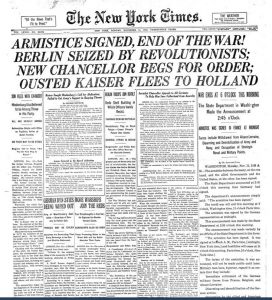

On the morning of November 11, 1918 they got word that an Armistice was signed and the Germans laid down their weapons. US, British, Belgian and French troops celebrated wildly and even the Germans expressed relief that it was over. On the 13th of November Horace’s company was relieved and hiked back to Halles, France. During the following six weeks they walked from France, across Belgium and Luxembourg, to Schweich, Germany. Company D remained there until May 1919.
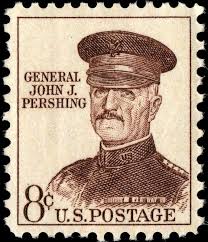 On April 23rd, the Division appeared for inspection and review at the Treves Aviation Field by the Commander-in-Chief of the American Expeditionary Forces, Gen. John J. Pershing. His letter dated four days later is a tribute to the outstanding campaign they had accomplished and something Horace must have felt proud to share with his family and friends.
On April 23rd, the Division appeared for inspection and review at the Treves Aviation Field by the Commander-in-Chief of the American Expeditionary Forces, Gen. John J. Pershing. His letter dated four days later is a tribute to the outstanding campaign they had accomplished and something Horace must have felt proud to share with his family and friends.
The Beginning of a New Life in New York City
On May 11th, the 89th Division began the first stage of their homeward journey by train to a troop ship. They spent about ten days crossing the Atlantic, disembarking in New York City. Horace was Honorably Discharged and was greeted by his mother and sister Hilda at 254 E. 184th St. in the Bronx where they had moved before he left for the war. Horace had a new home surrounded by members of the Wilford Doig family and a host of other Antiguan friends.
Horace got a job in June as the story continues in the next chapter.